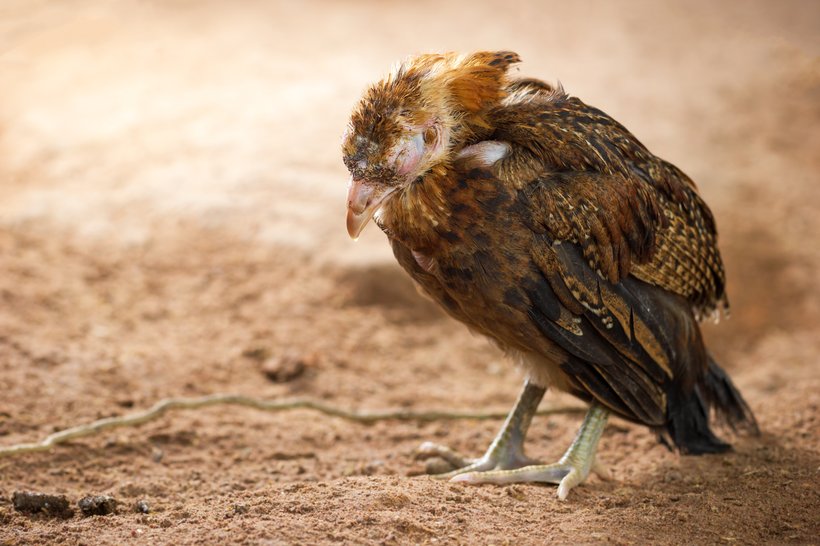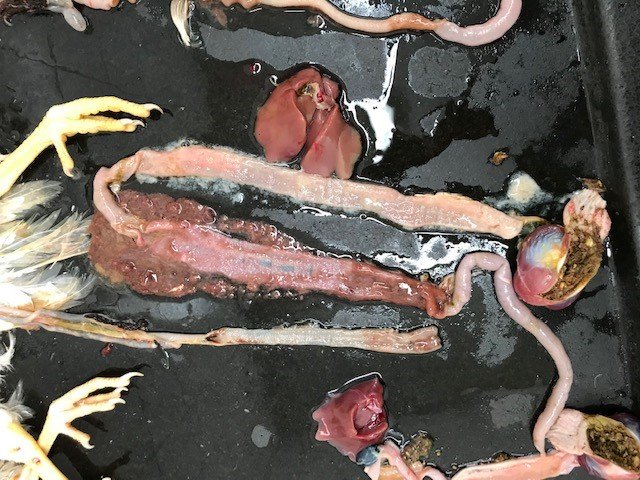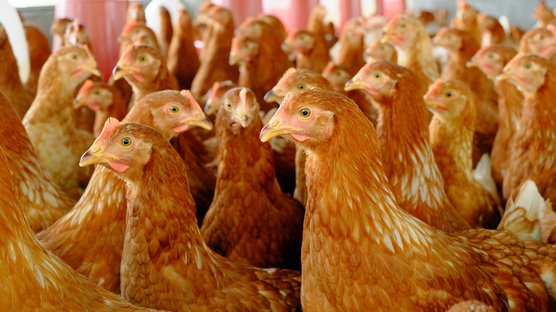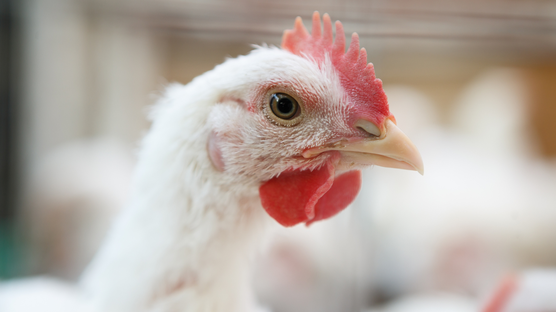
Published on May 10, 2021
Coccidiosis in poultry
Coccidia are single celled protozoan parasites of the Eimeria genus. Coccidia are transmitted from bird to bird fecal-orally, and the life cycle takes on average 7 days. Eimeria species are host specific. Coccidiosis is characterized by enteritis and intestinal cellular tissue damage. Intestinal damage is due to coccidia replication in the epithelial lining of the gastrointestinal tract. Coccidia infection can cause bloody feces, malabsorption issues, decreased performance, and mortality.
Common Eimeria species affecting chickens include: Eimeria acervulina, brunetti, maxima, mitis, mivati, necatrix, praecox and tenella. Each of these Eimeria spp. infects a particular part of the intestinal tract and are differentiated based on their macroscopic lesions and microscopic characteristics. Coccidiosis is common in the layer industry. The cost of coccidia control, increased susceptibility to secondary diseases, and decreased performance leads to a profound negative economic impact.

The above picture is obtained from Dr. Amit Kumar Pandey
Coccidia life cycle
Coccidia is a protozoan parasite that relies on the chicken as a host for its replication. There are no intermediate hosts involved in the epidemiology. Spread is mechanical by people and equipment. Coccidia oocysts are ubiquitous in the environment. Eimeria species have an 83 hour to 7-day life cycle from when they are ingested to when oocysts are excreted to litter. The coccidia oocyst must incubate and go through sporulation to become infective. The barn environment must be ideal to produce sporulated oocysts with about 25% moisture, available oxygen, and heat. After sporulation, each oocyst has 8 infective sporozoites within its cell wall. Upon ingestion, the chicken’s gizzard and proventriculus break down the cell walls around the sporozoites allowing for their invasion of intestinal epithelial cells where they undergo several cycles of asexual and sexual reproduction. Each reproduction cycle results in further intestinal damage due to Eimeria rupturing the cell wall and infecting new cells at the end of each cycle. The coccidia life cycle is important to keep in mind when managing Eimeria vaccination programs and in cage-free production.
Clinical signs
Eimeria cause direct damage to the intestinal wall resulting in the inability of the intestine to properly absorb nutrients and keep out bacterial pathogens. Destruction of the intestinal barrier results in decreased performance, poor uniformity, hemmorhagic diarrhea, and an increase in mortality. Infected live birds appear thrifty with pale combs, ruffled feathers, and decreased activity.
Diagnosis
Some species of Eimeria are easy to diagnose due to their pathognomonic lesions. For example, Eimeria tenella cause severe damage to the cecal lining resulting in blood filled ceca and ‘grape-jelly’ appearing faeces. E. necatrix also causes severe damage to the intestinal wall. Other milder Eimeria lesions are best appreciated within 15 minutes after death or euthanasia due to rapid post-mortem degradation. Co-infections with Clostridium perfringens can cause additional damage and can increase mortality. Confirmation of Eimeria infection is performed microscopically. Flock coccidia load can also be assessed by fresh fecal floats that enumerate oocysts per gram of feces.

Damage to the intestinal wall caused by E. necatrix
Control and vaccination
Good husbandry practices, prophylactic use of anti-coccidial drugs or live parasite vaccination are the primary control measures. Vaccination is key for coccidia control in long lived birds. Birds do not develop cross immunity if infected with only one species of Eimeria. Therefore, every species of concern needs to be present in the vaccine. Vaccination occurs by a controlled exposure to a certain number of Eimeria species and oocysts at the hatchery or on the rearing farm. To develop a protective immunity after vaccination, repeated completion of the 7-day coccidia life cycle is necessary. Proper vaccination requires about 4 weeks of uninterrupted cycling. During this period, chicks must have access to feces for cycling and houses must have 35-60% relative air humidity to allow for sporulation. During coccidia cycling, pay attention to the birds and react accordingly. Bird behavior will change with cycling and vaccine reaction (enteric discomfort) is normal for 2-3 days. Adjust temperature up 2℉ if birds appear cold or febrile.
If coccidiosis related mortality occurs, intervention with low levels of an anticoccidial agent should be considered. Vaccine strain Eimeria spp. require a lower dose and shorter length of anti-coccidial treatment (2 days) if mortality is observed. Co-infections with Clostridium perfringens, causing necrotic enteritis and mortality, must be treated. Consult your veterinarian for recommended treatment.
References
- Hector M. Cervantes, Larry R. McDougal and Mark C. Jenkins. Diseases of Poultry, 14th Edition
- H.W. Peek and W.J.M. Landman. Veterinary Quarterly, Vol. 31, No. 3.
- Lean J. Broom. World’s Poultry Science Journal 2021, Vol.77, No1.



